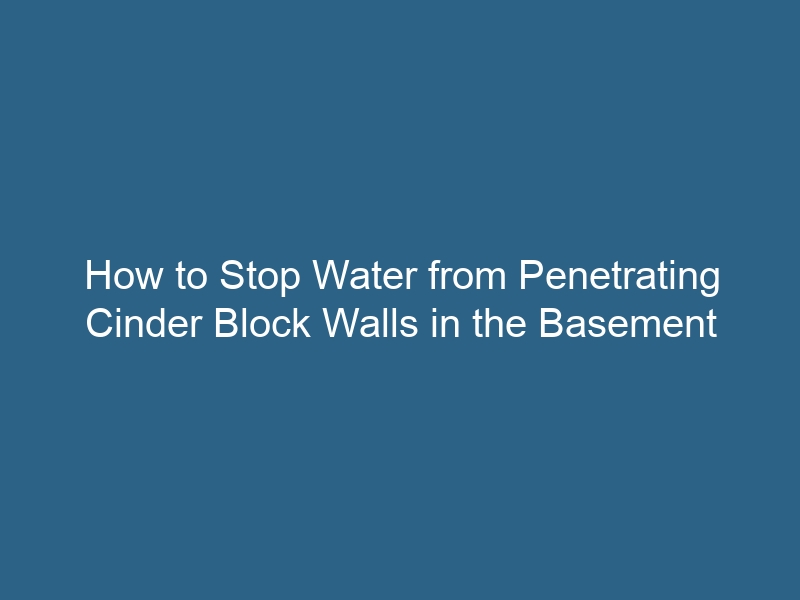Quck answer
Water infiltration through cinder block walls in the basement can be a common problem. To eliminate this issue, follow these steps:
1. Identify the source of water: Check for any cracks, gaps, or openings in the walls where water may be entering. Inspect the exterior of the house as well.
2. Repair any cracks: Use an epoxy or polyurethane-based sealant to fill in any cracks or gaps in the cinder block walls. Ensure that the sealant is applied properly and covers the entire area.
3. Improve drainage: Install a proper drainage system around the foundation of the house to divert water away from the walls. This can include installing gutters, downspouts, and French drains.
4. Waterproof the walls: Apply a waterproofing membrane or coating to the cinder block walls to prevent water from seeping through. This will create a barrier and help keep the basement dry.
5. Monitor and maintain: Regularly inspect the walls for any signs of water infiltration and address any issues promptly. Keep the surrounding area clean and free of debris that can block drainage.
By following these steps, you can effectively eliminate water infiltration through cinder block walls in the basement and keep your basement dry.
In the basement, cinder block walls are in direct contact with soil. Although cinder blocks are strong, they are also porous, allowing water to seep through, especially during the rainy season. Fixing this issue can be challenging because a complete solution would require excavation around the exterior wall. However, there are potential ways to prevent water from entering the cinder block walls without resorting to such drastic measures.
Step 1
Wear gloves and eye protection.
Step 2
Repair any cracks in the cinder blocks. Over time, it is common for cinder blocks to deteriorate and develop cracks. These cracks allow even more water to penetrate. Fill the cracks with an epoxy, following the instructions provided by the manufacturer.
Step 3
Apply a masonry waterproofer to the interior walls. Use a waterproofer specifically designed for cement walls. While this will prevent water from entering your home, it may not completely stop water from soaking into the cinder blocks from the outside.
Step 4
Redirect water away from your home. If your property slopes towards your home, it will be difficult to control water infiltration. Adjust your landscaping so that it slopes away from your home, install a French drain in your yard, or take other measures to divert water away from your home.
Step 5
Excavate the area surrounding the exterior basement walls and apply foundation insulation to waterproof the area. The original construction may have included a waterproof barrier, but it can deteriorate over a 25-year period.


